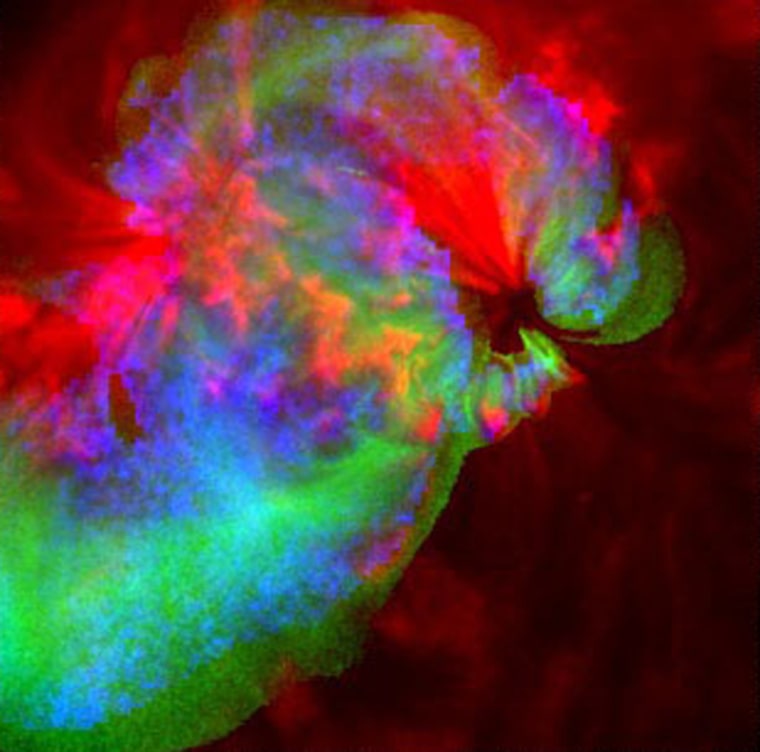Small, sudden bursts of heat and energy, called nanoflares, are responsible for the million-degree temperature of the sun's tenuous atmosphere, a new study reveals.
The mystery of why temperatures in the sun's outer atmosphere, or corona, soar to several million degrees Kelvin (K) — much hotter than temperatures nearer the sun's surface — has puzzled scientists for decades.
"Why is the sun's corona so darned hot?" said study member James Klimchuk of NASA's Goddard Space Flight Center in Greenbelt, Md.
To answer this question, Klimchuk and colleagues constructed a theoretical model of the nanoflares, which are components of the loops of hot gas that arch high above the solar surface to make up the corona.
"Coronal loops are building blocks of the corona," Klilmchuk said. "Their shape is defined by the magnetic field, which guides the hot flowing gases called plasma."
These loops are made up of bundles of smaller, individual magnetic tubes or strands that can have temperatures reaching several million degrees K, even though the sun's surface is only 5,700 degrees K (9,800 Fahrenheit). (One million degrees K would be about 1.8 million degrees Fahrenheit.)
Nanoflares are small, sudden bursts of energy that happen within these thin magnetic tubes in the corona.
Unlike the bigger solar flares, which can be viewed through satellites and ground-based telescopes and can disrupt electronics and communications networks on Earth, nanoflares are so small that they cannot be resolved individually, so until now, no direct evidence of nanoflares was seen. Only the combined effect of many of them occurring at about the same time is visible.
What exactly happens
Klimchuk's model tries to pin down exactly what happens when these nanoflares erupt.
"We simulate bursts of heating and predict what the loop should look like when observed with a variety of instruments," Klimchuk said.
To test their model, the team observed gas emissions in the solar corona using the NASA-funded X-Ray Telescope and Extreme Ultraviolet Imaging Spectrometer on Japan's Hinode spacecraft.
"The 10 million degree temperatures we detected in the corona can only be produced by the impulsive energy bursts," Klimchuk said.
The ultra-hot plasma cools very quickly, however, which explains why it is so faint and has been so difficult to detect until now.
The energy lost from the cooling conducts down to the comparatively cooler solar surface. The gas there at the surface is heated to about 1 million degrees K and expands upward to become the 1 million degree component of the corona that has been observed for many years.
Klimchuk presented the findings Aug. 6 at the International Astronomical Union General Assembly meeting in Rio de Janeiro, Brazil.
